Below are the answers to our 2022 virtual Easter Egg hunt!
How did you do?
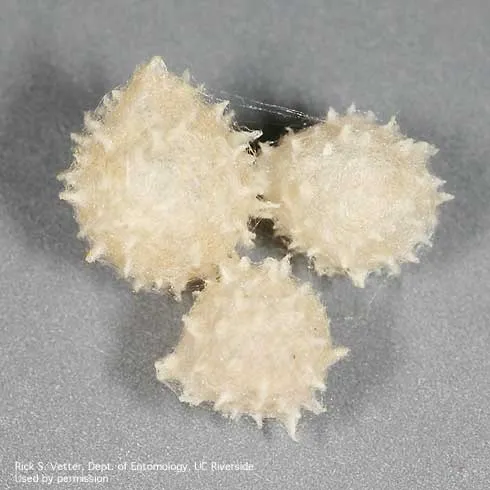
Brown widow spiders, a relative of black widow spiders, have egg sacs which are cream colored and spikey, compared to western black widow egg cases which are smooth. Find out more about these spiders in the UC IPM Pest Notes: Widow Spiders and Their Relatives.
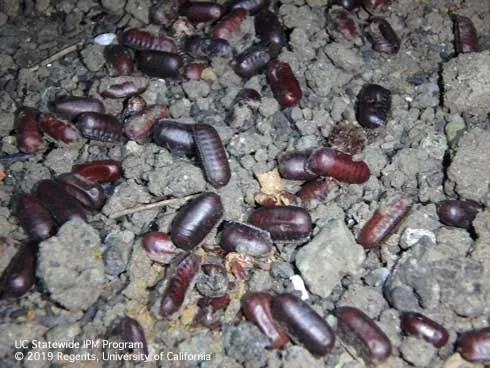
Pictured here are egg cases of Turkestan roaches. This species of cockroach is becoming more common throughout California. Compare other common cockroach pests, see pictures, and read more in Pest Notes: Cockroaches.
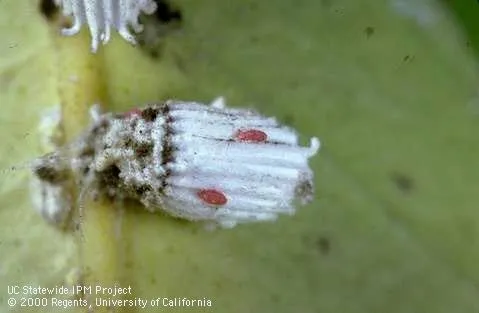
This photo may have been tricky to figure out. Pictured is a cottony cushion scale with red eggs of the vedalia beetle, a predator of cottony cushion scale.
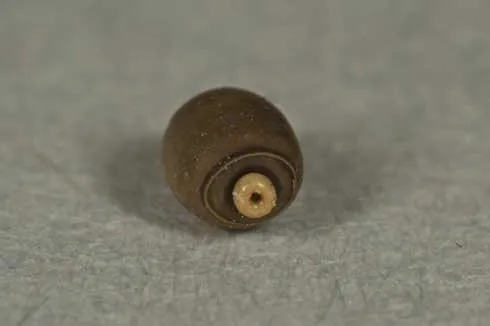
Not a common pest in all areas of California, the Indian walking stick can be found in some coastal areas feeding on roses and other related plants. There eggs resemble their frass and are very hard to find in the soil.
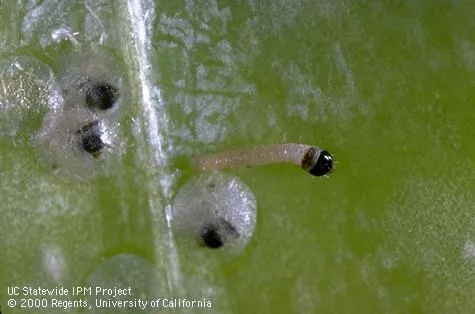
Codling moth, Cydia pomonella, is a serious insect pest of apples, pears, and English walnuts. After their disc-shaped eggs hatch, young larvae seek out and bore into fruit or developing nuts. Read more about their identification, life cycle and management at Pest Notes: Codling Moth.

Image F shows eggs of the brown garden snail (Cornu aspersum) that are close to hatching are beige to brown in color. Younger eggs are white. Read about managing snails and slugs in the Pest Notes: Snails and Slugs.
We hope you had fun playing the UC IPM Easter Egg hunt! See the 2019 egg hunt and the 2018 hunt for pictures of other common garden pests and "good bugs" and happy hunting!

